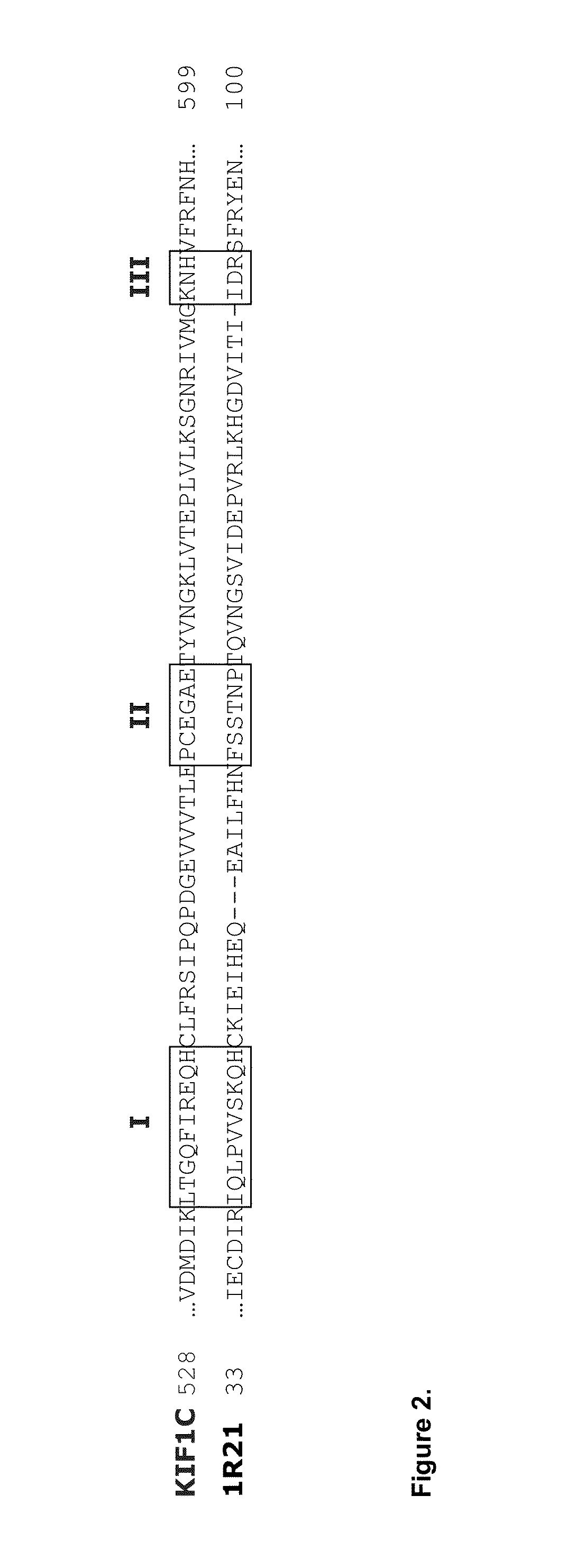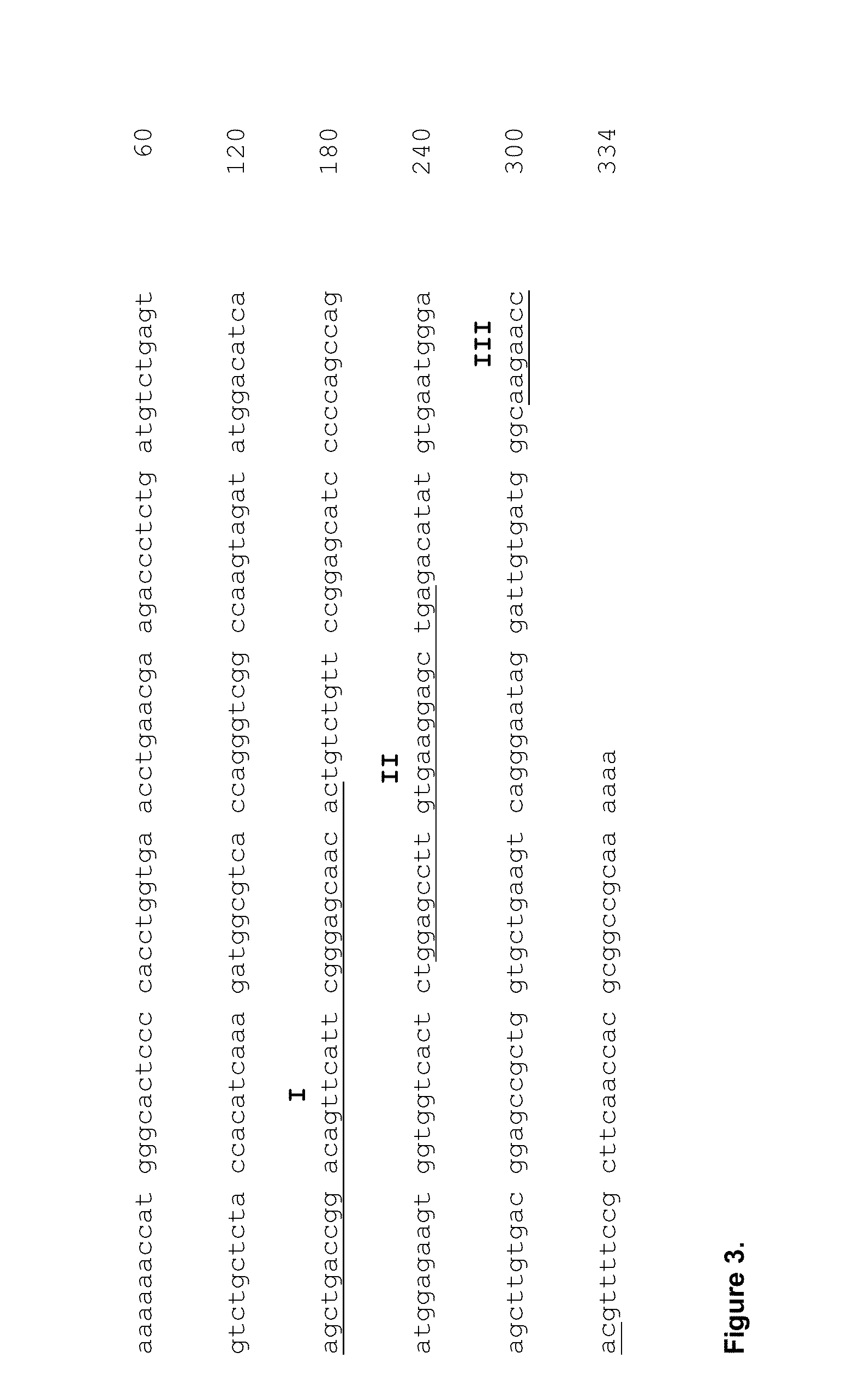Antibody like protein
a technology of antibody and protein, applied in the direction of peptides, nucleotide libraries, directed macromolecular evolution, etc., can solve the problems of high cost and time consumption of antibodies, unreliable control, and inconvenient production of antibodies, and achieve high throughput screening
- Summary
- Abstract
- Description
- Claims
- Application Information
AI Technical Summary
Benefits of technology
Problems solved by technology
Method used
Image
Examples
Embodiment Construction
(i) Definitions
[0029]The following definitions, unless otherwise stated, apply to all aspects and embodiments of the present application.
[0030]The present invention contemplates the production of a recombinant protein Nucleic acid.
[0031]An “oligonucleotide” refers to a single stranded DNA, RNA, or a DNA-RNA hybrid nucleic acid strand that may be approximately 18 to 30 nucleotides in length. Oligonucleotides can hybridize to genetic material such as DNA, cDNA, or mRNA. Oligonucleotides can be labeled at their 5′-terminus via an amino- or thiol-linker or at the 3′-terminus via an amino link with, but not limited to, fluorophores such as Cy3™, Cy5™, fluorescein, quenchers such as Dabcyl or T-Dabsyl, or alternative labels such as biotin and radioisotopes. Labeled oligonucleotides may function as probes to detect the presence of nucleic acids with a complementary nucleic acid sequence. Labeled or unlabeled oligonucleotides may also be used as primers necessary for performing PCR when clo...
PUM
| Property | Measurement | Unit |
|---|---|---|
| Electric charge | aaaaa | aaaaa |
| Length | aaaaa | aaaaa |
| Nucleic acid sequence | aaaaa | aaaaa |
Abstract
Description
Claims
Application Information
 Login to View More
Login to View More - R&D
- Intellectual Property
- Life Sciences
- Materials
- Tech Scout
- Unparalleled Data Quality
- Higher Quality Content
- 60% Fewer Hallucinations
Browse by: Latest US Patents, China's latest patents, Technical Efficacy Thesaurus, Application Domain, Technology Topic, Popular Technical Reports.
© 2025 PatSnap. All rights reserved.Legal|Privacy policy|Modern Slavery Act Transparency Statement|Sitemap|About US| Contact US: help@patsnap.com



